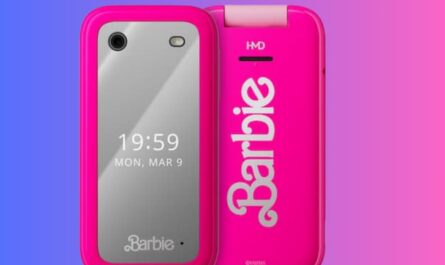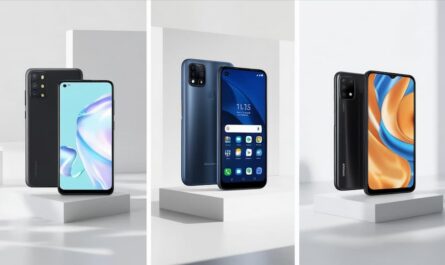The buzz around apple’s foldable iPhone has been building for years. Recent leaks provide a glimpse into what this revolutionary device might look like. Apple’s foldable iPhone marks a significant advancement in smartphone technology. It focuses on durability. The design is impressive, and it includes innovative features. As you explore the latest rumors and developments, here’s a breakdown of what we know so far.
A book-style foldable design and display
Apple’s foldable iPhone is rumored to feature a book-style design, similar to Samsung’s Galaxy Z Fold series. This means the device will open like a book, with a hinge placed along one side. When closed, it might resemble current iPhones, but upon unfolding, it will reveal a much larger display.
Leaks suggest the outer screen could be around 5.49 inches, while the inner screen might measure approximately 7.74 inches. This larger screen is likely to compete with other foldable phones on the market. Apple’s foldable aims to eliminate the creases often seen in rival devices.
Unique hinge design and durability
The company has developed a complex mechanism that promises a near-invisible crease when the screen is unfolded. One of the major highlights of apple’s foldable iPhone is its unique hinge design, as we know it. This might revolutionize the foldable market, where many other rivals have faced issues with noticeable screen folds.
Meanwhile, apple is focusing on durability, with patents hinting at advanced hinges and drop-protection features. The device might also include ceramic shield glass and water resistance to handle everyday wear and tear.
Performance and features
There’s talk of new software features tailored for foldable devices, like multitasking tools and customizable app layouts. Reports hint that the iPhone Fold may feature a powerful M1 chip and include ProMotion for smoother scrolling. Apple’s emphasis on durability and advanced materials could set its foldable apart from competitors.
Pricing and release date
The iPhone is expected to command a premium price. It could potentially cost above $2,000. Some estimates reach as high as $2,500. As for the release date, sources point to a launch by late 2026 or early 2027. But, some sources suggest it could debut as early as 2025.
Critics argue that apple’s entry into the foldable market is overdue. They believe this because competitors like Samsung and Huawei have already established themselves. However, apple’s focus on quality and design could help overcome challenges faced by other foldable phones. These challenges include durability issues and visible creases.
For more information on Apple’s iPhone 17 release date, check out this post on: What’s the expected launch date for iPhone 17?
The benefits of this iPhone include a seamless blend of cutting-edge hardware and software. This combination makes foldable devices more appealing to everyday users.
Industry insights and rumors
Industry insiders believe apple’s foldable phone will have a clamshell design. It will be similar to Samsung’s Galaxy Z Flip. This design offers a compact form factor. Others speculate it could support Apple Pencil input, making it a productivity powerhouse.
There’s also speculation about a wrap-around foldable design similar to Huawei’s Mate Xs 2, though this is less confirmed.
For more information on Galaxy Z Flip, check out this post on: Samsung Galaxy Z Flip 7 Leaks
How apple’s foldable iPhone compare to other devices
Apple’s book-style design is similar to Samsung’s Galaxy Z Fold, but with a focus on eliminating creases. When comparing the apple’s foldable iPhone to other devices on the market, we consider many factors do stand out. For example, the display size! The inner screen is expected to be larger than many current foldables, potentially offering more screen real estate.
Apple’s emphasis on advanced materials and hinge design aims to improve durability compared to existing foldables. Also, price is expected to be more expensive than many competitors. This reflects apple’s premium brand and features.
Comparing to samsung’s and google’s foldable models
Samsung has established dominance in the foldable space with years of refinement and innovation. Google offers a sleek design focused on software integration. Apple is likely to use its ecosystem. This will deliver seamless functionality and optimized user experiences. Apple’s foldable is expected to bring a unique approach to the market. It will differentiate itself from Samsung’s Galaxy Z series. The design will also stand apart from Google’s Pixel Fold.
As apple often enters new product categories later than competitors, it may aim to address existing shortcomings in foldable technology. Apple ensures its device stands out in terms of performance, usability, and integration with other apple products. The iPhone’s foldable design is rumored to focus on durability and premium build quality. It may include advanced features too. This approach could potentially set a new benchmark for foldable devices.
What to expect from apple’s foldable iPhone
The device is expected to feature a unique hinge design that minimizes creases. This innovative design sets it apart from competitors. As we await the release of apple’s foldable iPhone, these are some key points to consider.
Rumors suggest support for high-end processors and advanced software features tailored for foldable devices. So, be prepared for a higher price point compared to standard iPhones, reflecting the device’s innovative technology and design. While the wait continues, and the anticipation builds. It will be interesting to see how apple’s entry impacts the foldable phone market.
What are the potential benefits of a crease-free foldable display
Crease-free foldable displays offer several potential benefits that enhance both functionality and user experience. These displays provide a smoother, more seamless viewing experience, eliminating visual distractions caused by creases. This improves the aesthetics and ensures a more immersive interaction with the screen.
The absence of creases can enhance the display’s durability. This reduces stress points that might lead to damage over time. Crease-free designs also support better touch sensitivity, enabling precise and consistent input.
Overall, such innovation paves the way for more advanced and user-friendly foldable devices, revolutionizing portable technology.
What’s the difference between book-style and clamshell-style foldable iPhones
The main differences between book-style and clamshell-style foldable iPhones lie in their design, functionality, and target audience.
1. Design and form factor
Book-style foldable opens horizontally like a book, resulting in a larger, tablet-like display. This design prioritizes multitasking and an expansive screen experience.
Clamshell-Style Foldable folds vertically, creating a compact, pocketable form factor. This style emphasizes portability while maintaining the functionality of a standard smartphone when unfolded.
2. Screen size and usability
Book-Style typically offers a larger inner display for productivity tasks, media consumption, and split-screen multitasking. Clamshell-Style, on the other hand, features a smaller unfolded screen. It is suitable for everyday use while focusing on convenience and style.
3. Audience and purpose
Book-Style appeals to users who need a balance between a smartphone and a tablet, such as professionals or content creators. Clamshell-Style targets users who prioritize portability, fashion, and a compact design without sacrificing smartphone capabilities.
4. Durability and practicality
Book-Style may be heavier and bulkier due to its larger display and hinge mechanism. Clamshell-Style is often more lightweight and easier to carry, but the smaller display may limit certain tasks. However, both styles cater to different user preferences. This makes them distinct options in the foldable smartphone market.
The main challenges Apple faces in developing a foldable iPhone
Foldable devices require flexible displays and hinges that can withstand repeated folding. Ensuring long-term durability without compromising performance or aesthetics is a noteable engineering challenge. Apple faces these challenges in developing a foldable iPhone. This includes creating a foldable screen that maintains high resolution, color accuracy and brightness.
Foldable designs battery life often demand innovative battery configurations to fit within a compact form factor. Balancing battery life with the device’s slim design is a critical hurdle. Overcoming these obstacles will be key for apple to successfully enter the foldable smartphone market. It must maintain its reputation for innovation and quality. This is according to sources.


